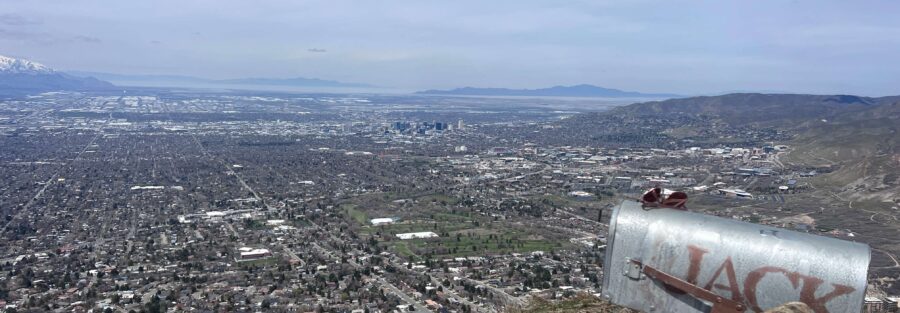Quick Facts:
Location: Foothills near Salt Lake City, Utah
Coordinates: 40.72907950653382, -111.80619928881278
Length: 2.5 Miles
Difficulty: Hard
Elevation Gain: 1,300 Feet
Dog Friendly: Yes
Introduction:
Jack’s Mountain, located in the Foothills Natural Area near Salt Lake City, Utah, offers hikers a lesser known but rewarding adventure with stunning views of the city, the Great Salt Lake, and the surrounding mountains. This hike is perfect for those looking for a quick escape into nature without venturing far from the city. Whether you’re a local seeking a new trail or a visitor wanting to explore the foothills, the hike up Jack’s Mountain provides a refreshing and scenic experience.
How to Get There:
Jack’s Mountain is conveniently located just minutes from downtown Salt Lake City. To reach the trailhead, take I-80 east from downtown and exit at 1300 East (Exit 126). Head north on 1300 East and turn right onto South Temple. Continue on South Temple until it turns into Virginia Street, and follow Virginia Street until it becomes 18th Avenue. Follow 18th Avenue to Terrace Hills Drive, where the trailhead is located at the end of the road. The drive from downtown Salt Lake City takes about 10 to 15 minutes, making this hike an easy and accessible option for a quick outdoor adventure.
Parking Information:
Parking for the Jack’s Mountain hike is available along Terrace Hills Drive, near the trailhead. The street parking is free, but spaces can be limited, especially on weekends and during peak hiking times. Arriving early in the morning or later in the afternoon can help ensure you find a spot. Please be respectful of local residents by not blocking driveways or mailboxes, and be mindful of any posted parking restrictions. There are no restrooms or other facilities at the trailhead, so plan accordingly before starting your hike.
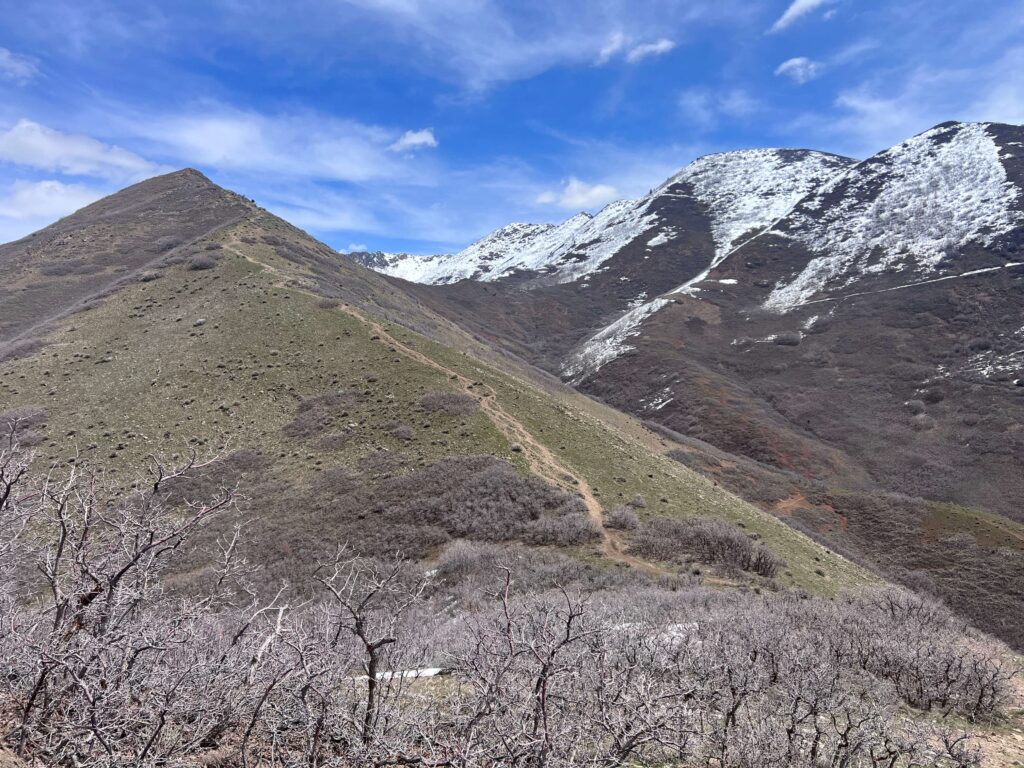
Description of the Landscape:
The hike up Jack’s Mountain offers a beautiful and varied landscape that showcases the natural beauty of the Salt Lake Valley’s foothills. The trail begins with a gradual ascent through open meadows and scrub oak, offering immediate views of the city and the valley below. As you climb higher, the trail becomes steeper and rockier, winding its way up the hillside.
Along the way, you’ll encounter a mix of wildflowers, sagebrush, and scattered trees, with the landscape becoming more rugged as you approach the summit. The exposed nature of the trail provides unobstructed views throughout the hike, making it a great spot for photography, especially during sunrise or sunset. The summit of Jack’s Mountain rewards hikers with panoramic vistas that stretch from downtown Salt Lake City to the Great Salt Lake and the Oquirrh Mountains in the distance. It’s a perfect spot to rest, take in the scenery, and appreciate the beauty of the Wasatch Front.
Trail Difficulty and Length:
The hike to Jack’s Mountain is challenging. The trail is approximately 2.5 miles round trip, with an elevation gain of about 1,300 feet. The trail is well-marked but can be steep and rocky in sections, so good footwear is recommended. The hike can typically be completed in 1.5 to 2 hours, depending on your pace and how long you spend at the summit. The combination of moderate distance, elevation gain, and stunning views makes this hike a rewarding experience for those looking to explore the foothills.
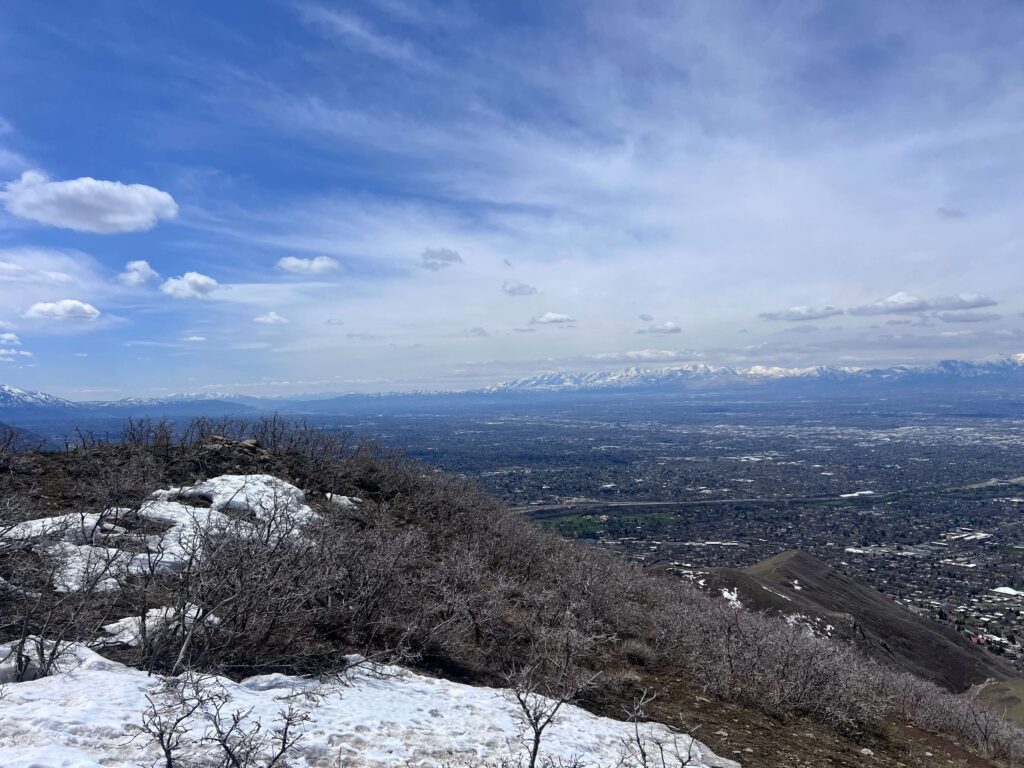
Dog-Friendly Information:
Jack’s Mountain is dog-friendly, so feel free to bring your furry friend along for the adventure. Dogs must be kept on a leash at all times to ensure their safety and the safety of other hikers and local wildlife. The trail’s open and exposed nature means there is little shade, so be sure to bring plenty of water for both you and your dog, especially on hot days. Always clean up after your dog to keep the trail clean and enjoyable for everyone.
Local Regulations:
When hiking in the Foothills Natural Area, it’s important to follow local regulations to help preserve the natural environment and ensure a safe experience for all visitors. Stay on designated trails to minimize your impact on the fragile foothill ecosystem, and avoid disturbing the local wildlife. As with all outdoor areas, practice “Leave No Trace” principles by carrying out all trash, respecting other hikers, and leaving the landscape as you found it. The trail can be busy, especially during peak times, so be courteous and share the trail with others.
Other Trails Nearby:
If you’re interested in exploring more of the Foothills Natural Area after hiking Jack’s Mountain, there are several other trails nearby that offer different experiences. The Bonneville Shoreline Trail is a popular, longer trail that runs parallel to the city and offers various access points for shorter or extended hikes. The Avenues Twin Peaks Trail provides a more challenging climb with rewarding views of the city and the Wasatch Mountains. For a shorter, more leisurely hike, the Ensign Peak Trail offers a quick walk to a historic viewpoint overlooking Salt Lake City.
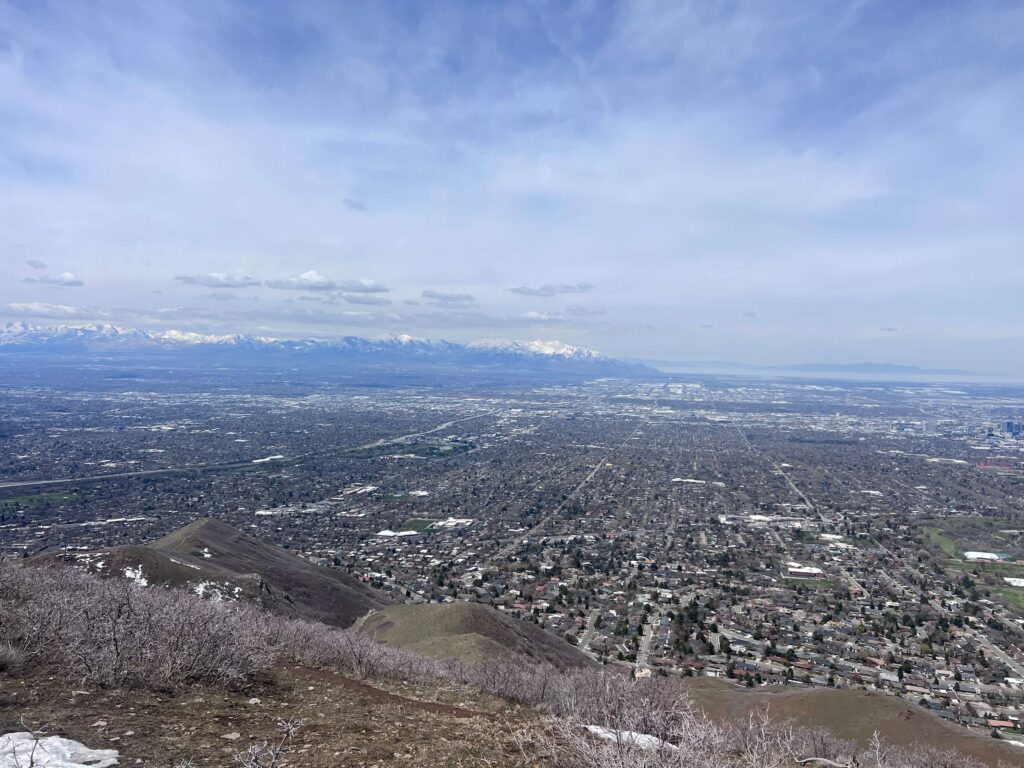
Non-Hiking Attractions Nearby:
In addition to hiking, the area around Salt Lake City offers a variety of attractions for visitors. Temple Square is a must-see destination for those interested in the history and culture of the region. The nearby Utah State Capitol offers stunning architecture and beautiful grounds for a leisurely stroll. The Natural History Museum of Utah provides fascinating exhibits on the state’s natural history, geology, and native cultures. For those interested in art, the Utah Museum of Fine Arts on the University of Utah campus offers a diverse collection of works from around the world.
Accommodations: Where To Set Up Basecamp
If you’re looking for modern luxury right in the heart of downtown, the Hyatt Regency Salt Lake City is a top pick. With sweeping mountain views, stylish rooms, and an unbeatable location next to the Salt Palace Convention Center, it’s perfect for both adventurers and business travelers. You can unwind at the rooftop pool, grab a drink at the lively lobby bar, or step outside and find yourself within walking distance of Temple Square, City Creek shopping, and all the best food in town.
👉 Book your stay at Hyatt Regency Salt Lake City here and lock in the best available rates. Every booking through my link helps fuel more Unicorn Adventure road trips and photography journeys!
The Hilton Salt Lake City Center nails that classic downtown vibe with spacious rooms, great on-site dining, and a central location that makes exploring a breeze. Whether you’re catching a Broadway show at Eccles Theater, attending a convention, or heading up into the Wasatch Mountains for a quick hike, this hotel keeps you close to it all. Bonus: the indoor pool and fitness center are perfect for recharging after a long day.
👉 Reserve your room at Hilton Salt Lake City Center here and enjoy exclusive savings. Using my affiliate links directly supports my photography and storytelling while giving you the same great deals.
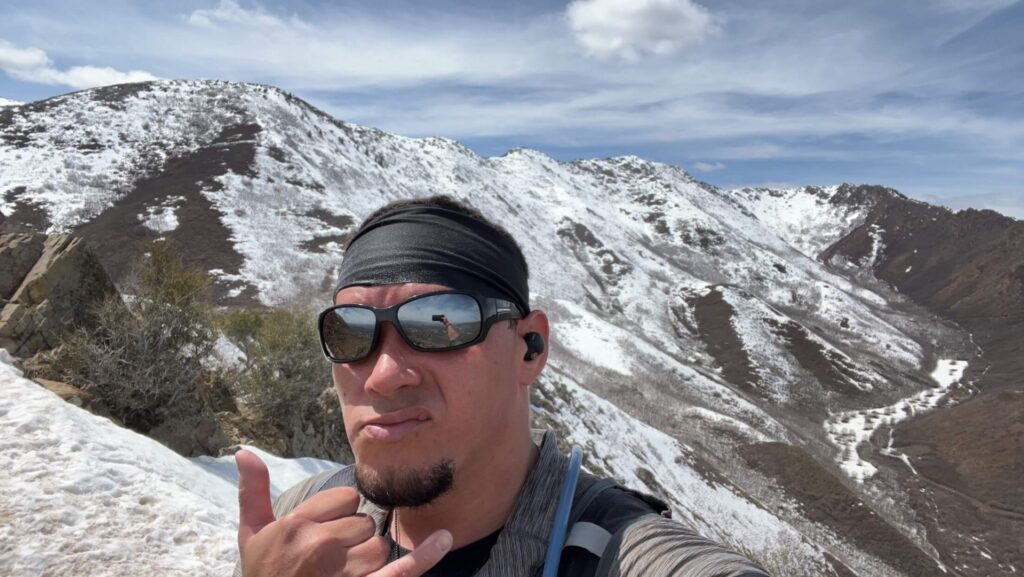
Best Time to Visit:
The best time to hike Jack’s Mountain is during the spring and fall when temperatures are mild and the trail is at its most beautiful. Springtime brings blooming wildflowers and lush green vegetation, while fall offers cooler temperatures and the chance to see the changing colors of the leaves. Summer hikes are also popular, but be prepared for the heat and plan to go early in the morning or later in the evening to avoid the midday sun. Winter hikes are possible but may involve navigating snow and icy conditions, especially on the steeper sections of the trail.
Support the Adventure
To make your walls less boring, check out my photography portfolio and bring a piece of the wild and my story into your home.
If you’d like to fuel future adventures, you can donate a coffee on Ko-Fi. Every cup keeps me chasing sunrises and stories.
When you shop using my affiliate links, every click helps support this blog at no extra cost to you. It’s a small way to keep Unicorn Adventure alive and kicking while I keep exploring.
Subscribe to my mailing list for future updates, new stories, and behind-the-scenes adventures.
Stay connected with me on Instagram and Facebook for more photos and daily inspiration.
Thanks for being part of the journey, Unicorn Squadron!


